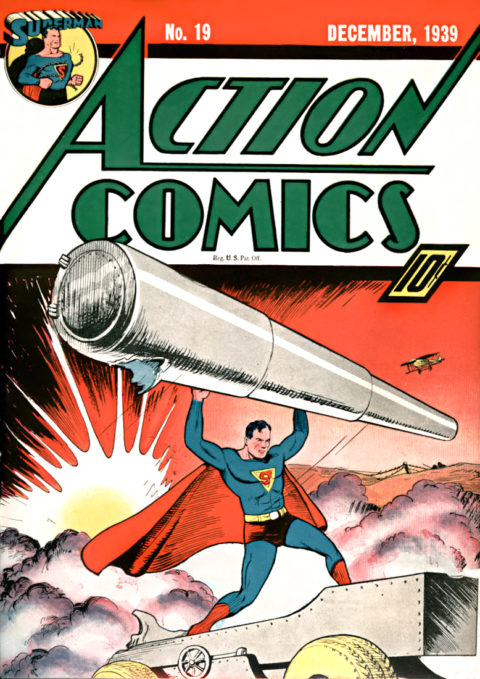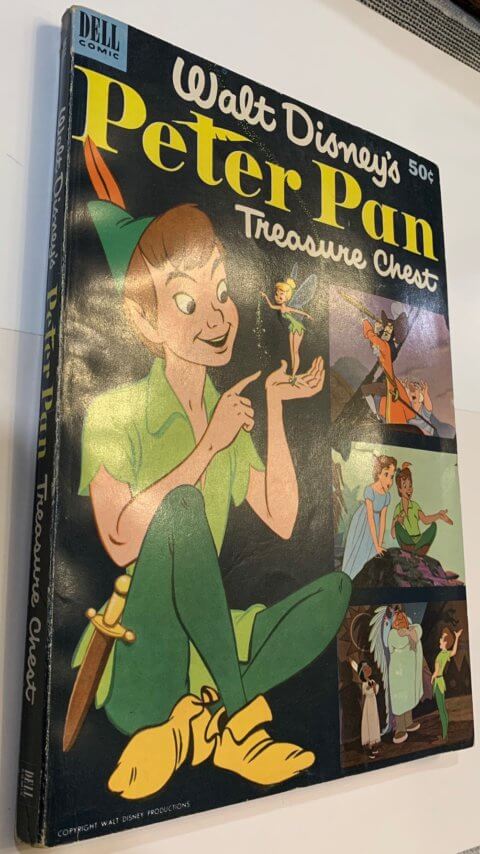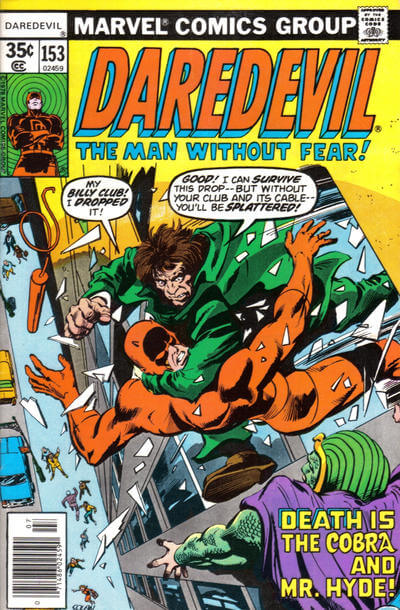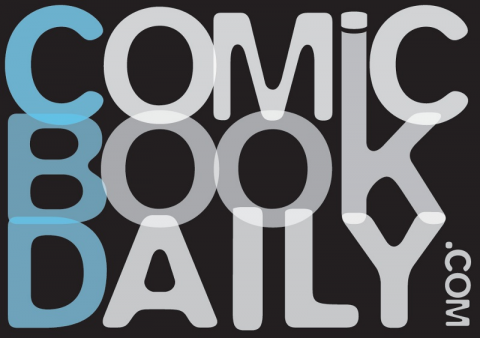Action Comics #19, DC Comics, December 1939.

This week’s Undervalued Spotlight came about because of an argument over Superman #2. A friend of mine, and a comic book nut, was arguing that Superman #2 should be featured on the Spotlight because it was a 1939 Superman comic. I had a poke around and saw the healthy $70,000 Guide value assessed to it and thought – but this is an all reprint issue! I took that thought out for a little ride and I ended up at this week’s Undervalued Spotlight, Action Comics #19.
My argument is simple, Action Comics #19 is a much better book than Superman #2, it has original content and it is the start of constant Superman covers on Action Comics, more importantly, it was published December 1939 making it the last Superman comic published in the 1930s.
Superheroes from the 1930s are the rarest of birds, what do we have, 22 Sups (19 Action, 2 Superman, 1 World’s Fair), 7 Bats (Detective #27 to #34), a few Marvel Mystery Comics and some random heroes from DC and Centaur I believe that might have the grand total at around 40 superheroes in the 1930s?
Yes, Flash, Wonder Woman, Green Lantern, Captain America etc all came out in 1940 and beyond.
What does this matter? Well, it seems to matter more and more as the market continuously differentiates, divides and subdivides giving more and more importance to things like age and era.
I’d love a comic with a superhero from the 1930s and Action Comics #19 may give me the most bang for my buck. I get the hero that launched it all, I get an extremely collected title and within the hardcore collecting sequence #1-#23 (first Luthor), where the big boys play.
A Superman #2 in CGC 6.0 just sold for $15,600 while a 5.0 recently sold for $9,200. Why not park a measly $6,600 beside an Action Comics #19 in a solid CGC 6.5! Just want to wade in and own a piece of history? Grab a CGC 2.0 for $1,427 like someone did recently and compare your good fortune to the recent purchase of a Superman #2 at CGC 1.5 for $4,458.
The good news is there are copies of Action #19 around and they do come up for sale and I think the book is a heavyweight in the waiting so don’t wait any longer and grab one while you can.
The 48th Overstreet price breaks for this book are $1620/$3140/$4710/$11800 in the 2.0/4.0/6.0/8.0 grade splits.
Strengths that make this comic a good long-term investment are:
- One of only 21 Superman comics published in the 1930s
- Superman covers begin




Nice pick Walt. You do your best work while under pressure with other matters. 🙂
This is a blue-chip Spotlight. Not a Porcupine, not a Rocket Racer, but an instantly recognizable ur-book. Add that to the clever premise and I can’t tear my attention away until I have reached my Verdict.
Let’s first get away from the “better than Superman #2” argument. This might be perfectly clear to an educated purist, but the market is the market. I first read commentary by others, and then observed, that the name titles (Batman and Superman) tend to enjoy a premium over the “original” titles (Detective and Action), particularly for run books. I can’t grok the thoughts/feelings behind this but I would still not advocate a long Action/short Superman position. Of course the even bigger impact is the numbering – clearly the #1 cachet echoes at least through the first ten issues of a title.
The “original content” is also a purist argument. As you have pointed out, given the plastic cases, we now live in a judge-a-book-by-its-cover world. Also people seem to have no problem paying four figures for the X-Men reprint books that I reviled even at an early age, so I don’t think that critique is significant in the realm of dollars and cents.
To me, your really compelling arguments are a) first of the Superman cover run, and more importantly b) a 1930s-vintage hero comic. The supporting arguments are also compelling. In fact we only have Marvel #1 and Marvel Mystery #2 dated 1939, and from these I think only Sub-Mariner and The Human Torch are popularly recognizable. Marvel #1 is an interstellar property and Marvel Mystery #2 has an Angel cover, so a serious drawback. The Centaurs are for the initiates only, and we know that there are deep pocket buyers who can barely tell you Marvel from DC, so best to stick with the true blue chips when working this angle. The Adventure Sandmans sit somewhere in between, and I think a case could be made for them as well, but again mostly for initiates. I think World’s Fair 1939 is an exceptional book but there is no action on the cover, at the end of the day it is a terminus, and regardless of its historical position it doesn’t elicit the reaction of an issue of a long-running title.
So we are left with Action, Detective, and Superman, with the Detectives and Supermans untouchable. I become more convinced…
The Action #23 supporting argument is great. If I want to show my nice run of early Actions (including a CGC-verified piece of staple rust from Action #1), am I really not going to make it to #23? In that case #19 is an essential.
Something you didn’t even mention is that this is essentially a WW II cover. Given lead times I guess it couldn’t have been drawn prior to the invasion of Poland on 1 September, but tensions were high in Europe and Italy had invaded Albania. I think that makes this cover even more desirable.
As always I immediately start thinking about comps. In this case they immediately presented themselves. The comps are very clearly Action #17 and Action #21. These are very clearly good bounds on Action #19. #17 is the first WW II cover, and the next earlier Superman cover. #21 is also a WW II cover, but into 1940.
The first thing that strikes me in looking at the prices is how moribund they are. I see little evidence of budding interest in any of these.
It seems surprisingly easy to estimate values for these issues in available grades (say 7.0 and below), although the data for #21 is much thinner. My basic conclusion is that #17 and #19 are equivalently priced, while #21 is about half the price of those (on a relative scarcity basis).
I didn’t expect this result, and while it doesn’t invalidate the premise, I think it raises serious questions that would require a good deal more analysis:
– If #19 is undervalued, doesn’t this result say the same for #17? That is an earlier book, and to me a better WW II cover. Maybe there are some other considerations that we haven’t mentioned, but all that is left is #19 being the first of the uninterrupted Superman cover run. This is a pretty esoteric baseball statistic that I don’t see getting much traction in the comic book market.
– If you just want to play the “up to #23” game, #21 is a much cheaper way to play it, and you get a good WW II cover to boot. It’s possible/likely that the big price difference is due to the 1939/1940 split, but in that case you are already seeing the 1939 hero effect priced in.
As I have already spilled enough bytes and my readership is at best in the single digit, I’ll stop here and say that while I still like the idea, if at this point I had to act on it, my bias would be to pursue #17. The overall lack of evidence for any budding interest in this set of books is another red flag that for now turns my interest elsewhere.
Verdict: The jury remains out, but it seems few are hanging on the result.
Epic as always Chris and full of insights. We learn more from your comments than my posts sometimes Chris!!
Thanks Walt. If you like my #17 idea there is a 5.0 in the ComicLink auction that starts Thursday. I say a fair price is USD 4300.